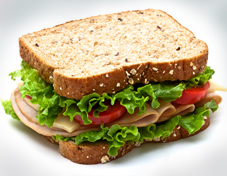When people are in meetings for hours, focus naturally starts to slip. Hunger is one of the biggest distractions that pulls attention away from important discussions. Offering good food at lunchtime meetings is more than just a nice extra. It plays a big role in helping teams stay alert and engaged. Without having to worry about where they are going to eat or when they can sneak in a snack, employees can give their full attention to the meeting. This boosts not only concentration but also the quality of ideas and decisions made. Nobody can perform at their best when they are hungry, and when meetings are scheduled around meal times, planning food delivery becomes part of good time management.
The Impact of Convenience on Meeting Productivity

When a meeting runs over lunchtime, taking a long break to order food or send someone out to collect meals breaks the rhythm. Convenience matters. Having food delivered directly to the boardroom saves time and reduces the likelihood of people getting distracted. It also prevents delays that could extend meetings unnecessarily. Convenience is about removing friction from the process. When food arrives at the right time, it becomes a background support that allows work to continue flowing smoothly. Less disruption means better energy levels across the team. This kind of planning sends a clear message that the meeting has been taken seriously.
Choosing the Right Type of Food for Different Meetings
Not all meetings are the same. Some are highly formal, while others are creative sessions where people move around and brainstorm ideas. The type of food chosen should fit the tone of the meeting. For longer planning sessions, meals that are easy to eat without needing heavy cutlery work best. Sandwich platters, wraps, and salads that can be eaten with one hand are a smart option. For formal meetings with clients, slightly more structured meals might be appropriate. Matching the food to the meeting avoids awkwardness and keeps people comfortable. It is also worth thinking about foods that are less messy or have mild smells, to keep the environment professional.
Timing Food Delivery to Minimise Disruption
Food delivery should feel seamless during meetings. If meals arrive too early, food gets cold and unappetising. If they arrive too late, hunger becomes a distraction. Timing deliveries properly is crucial to keeping meetings productive. Planning the food to arrive five to ten minutes before the scheduled lunch break works well. This gives enough time for quick setup without interfering with the meeting flow. Good communication with the food supplier is part of this. Clear instructions about the timing and location within the office help ensure that the food shows up exactly when and where it is needed.
Handling Special Dietary Requirements Without Stress
Every office has people with specific dietary needs, whether for health, religious, or personal reasons. Handling these requirements upfront avoids uncomfortable situations during meetings. It is always better to ask participants ahead of time if they have any dietary restrictions. Options for vegetarian, vegan, gluten-free, and other common needs should be included in the order. Keeping labels on different dishes can prevent confusion and make it easier for people to find something they can eat. This small bit of planning helps everyone feel included and respected, and it reduces the risk of someone going hungry because there was nothing suitable for them.
The Role of Presentation in Corporate Food Delivery
Food is not just about taste. The way it looks affects how people feel about the meal and about the meeting itself. Sloppy packaging, messy layouts, or food that looks like an afterthought can create a bad impression. Good presentation shows that attention has been given to every detail, and this reflects positively on the organisation. Even simple meals can look professional if they are packed neatly, served in good containers, and arranged thoughtfully. For important client meetings, it is worth taking extra care to ensure that the food looks as good as it tastes.
Balancing Budget and Quality for Corporate Meals
Budgets are always part of the conversation when it comes to corporate spending. While it might be tempting to save costs by choosing the cheapest options, low-quality food can harm morale and make meetings feel like a chore. Balancing budget and quality is about finding good value. Meals do not have to be expensive to be good, but they do need to be satisfying and fresh. Negotiating with suppliers for corporate rates or regular delivery discounts can help manage costs without sacrificing quality. A smart approach to budgeting includes factoring in the frequency of meetings and the number of attendees to find a sustainable solution.
How Food Choices Can Influence Team Morale
Good food creates a positive atmosphere. When employees feel that their needs have been thought of, it strengthens goodwill. It shows that management cares about their comfort and wellbeing. This can have a big impact on how motivated people feel during meetings. Meals that are enjoyable lift spirits, encourage better participation, and even make long meetings feel less draining. Food becomes a simple but powerful tool for building a stronger, more connected team. Over time, this kind of attention to detail helps foster a better working environment overall.
Avoiding Common Mistakes with Corporate Food Delivery
There are plenty of small mistakes that can turn a well-intentioned meal into a problem. Ordering too little food leaves people hungry and frustrated. Ordering too much creates waste. Failing to account for dietary restrictions leads to embarrassment or resentment. Miscommunications about delivery times can cause delays that interrupt the meeting. Even simple errors like not providing enough napkins, cutlery, or drinks can cause unnecessary irritation. The best way to avoid these mistakes is by planning carefully, confirming orders in advance, and double-checking all the details before the meeting day.
Building a Repeatable System for Meeting Catering
Creating a system for food delivery makes the process easier over time. Keeping a list of reliable suppliers, preferred meal options, and attendee dietary preferences saves time for future meetings. Having templates for order emails and clear checklists for delivery instructions streamlines the process. When meeting organisers do not have to start from scratch every time, they can focus more on the meeting content itself. A repeatable system means fewer mistakes, faster arrangements, and better overall results. It also helps keep costs under control by using tried and trusted options that have worked well in the past.
Real-Life Examples of Smart Corporate Food Delivery Choices
An internal planning meeting that included a quick buffet of finger foods kept the team energised without disrupting the creative flow. An executive session that provided individually boxed meals helped maintain a clean, professional look while respecting everyone’s dietary needs. A training workshop that ran across a full day used timed snack and lunch deliveries to keep energy levels up without breaking concentration. These examples show that small details around food planning can make a big difference to how smoothly meetings run.
How to Manage Last-Minute Orders Without Chaos
Sometimes meetings are scheduled at short notice, and food delivery needs to happen fast. Having a list of suppliers who can handle last-minute orders is essential. It also helps to keep a few standard menu options ready to order without needing back-and-forth discussions. Simplifying the process as much as possible reduces stress. Quick decisions about what kind of food is acceptable in a rush situation keep things moving. Clear communication about expected delivery times and flexibility with menu choices are both useful when working under time pressure.
Importance of Communication Between the Office and Delivery Services
Even the best planning can fall apart without good communication. Making sure that delivery drivers know exactly where to go, who to ask for, and what time they are expected helps avoid mix-ups. Giving clear instructions about parking, building access, and reception processes can save valuable minutes. Having someone available to accept the delivery and set up the food prevents delays. A quick call on the morning of the meeting to confirm details with the supplier can be the difference between a smooth experience and a frustrating one.
Choosing Between Set Menus and Customised Orders
There are advantages to both set menus and customised orders. Set menus are faster to arrange and often more cost-effective. They work well when there is a clear idea of what is needed and when dietary needs are standard. Customised orders, on the other hand, offer flexibility for special occasions or when a diverse group of attendees has different preferences. The choice depends on the specific meeting context. Balancing simplicity with satisfaction is the goal. Sometimes, a well-chosen set menu is enough. Other times, a customised order can help make the meeting feel more personal and considered.
Breakfast Meetings Versus Lunch Meetings: Different Needs
Breakfast meetings have different food requirements compared to lunchtime sessions. Morning gatherings call for lighter options like muffins, fruit, yoghurt, and coffee. People are usually not looking for heavy meals first thing in the day. For lunch, heartier options like sandwiches, salads, and wraps are better suited. Understanding the mood and energy levels at different times helps in choosing the right type of food. The aim is to complement the flow of the meeting, not to weigh people down or leave them unsatisfied.
Food Safety and Hygiene in Corporate Deliveries
Food safety is not something to overlook. Meals should be handled with care to avoid health risks. Choosing suppliers who follow strict hygiene practices is part of responsible meeting planning. Deliveries should come in sealed containers, and food should be kept at safe temperatures until it is eaten. Meetings that stretch over several hours might require extra planning to keep food fresh and safe. Providing hand sanitisers and disposable cutlery can add an extra layer of comfort for attendees.
Tips for Keeping Food Fresh During Long Meetings
When meetings run long, it is important to think about how food will hold up. Choosing foods that stay fresh for longer periods makes a difference. Salads with separate dressings, sandwiches with ingredients that do not go soggy quickly, and snacks that do not need refrigeration all help. Keeping cold items in coolers or insulated bags until needed prevents spoilage. Timing the serving of meals and snacks carefully ensures that food is eaten when it is still at its best.
Aligning Food Delivery with Company Culture
The choice of food at meetings says a lot about a company’s values. If a company focuses on health and wellness, offering fresh, healthy meals shows consistency. If casual collaboration is encouraged, laid-back food options like shared platters support that atmosphere. Aligning food choices with the overall company culture strengthens internal branding and builds a stronger team identity. It also helps reinforce the sense that small details matter, and that meetings are a reflection of broader organisational values.
Managing Leftovers After Corporate Meals
Leftovers should not go to waste. Planning for what happens after the meeting ends is part of responsible food management. Providing take-home containers or encouraging employees to help themselves to remaining food can prevent unnecessary disposal. Some companies organise small internal donations to food banks where regulations allow. Being thoughtful about leftovers shows respect for both the food and the effort that went into arranging the meeting.
Setting Expectations for Corporate Catering Etiquette
Clear expectations help keep meal times during meetings professional and smooth. Simple reminders about where to collect food, how to handle waste, and being considerate to others make a big difference. Encouraging people to grab food quickly and return to their seats helps meetings stay on schedule. Respecting dietary needs, not wasting food, and maintaining a clean space all contribute to a better experience for everyone involved.




Leave a Reply